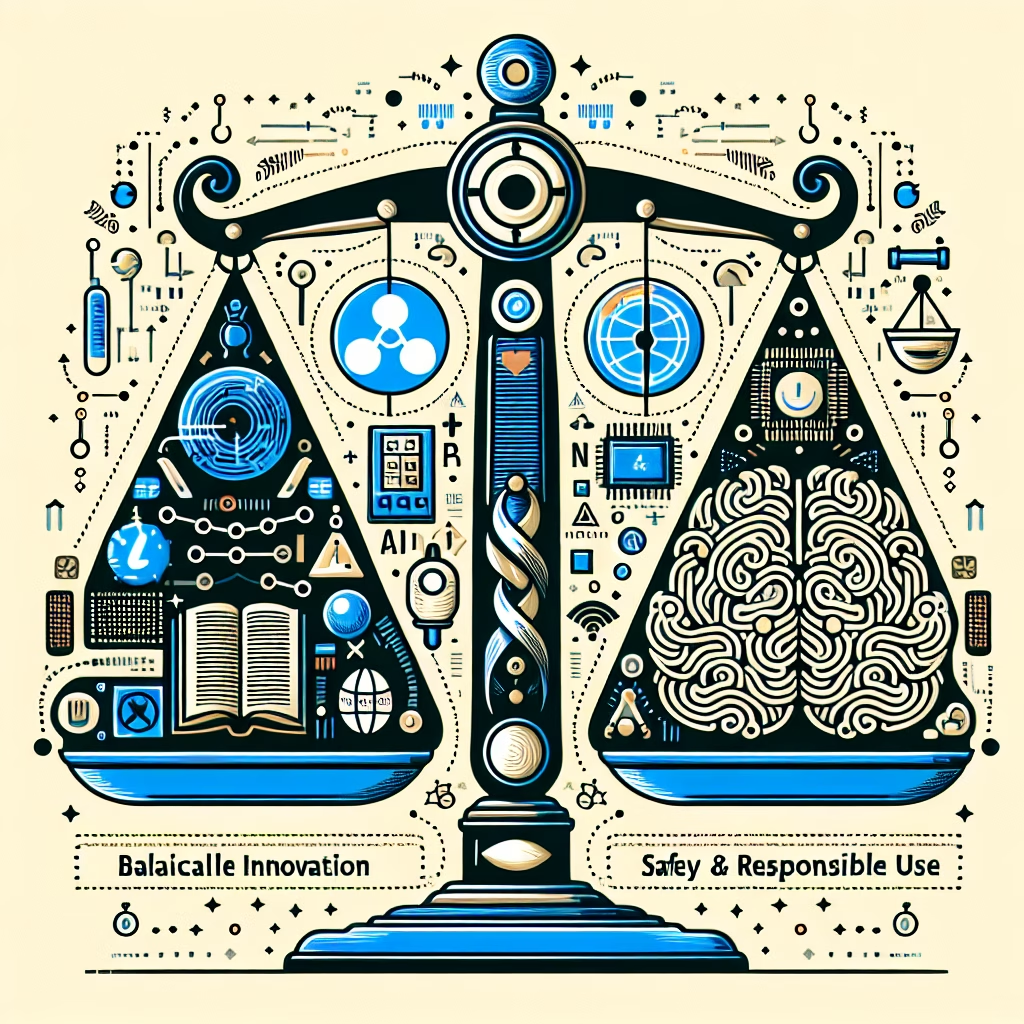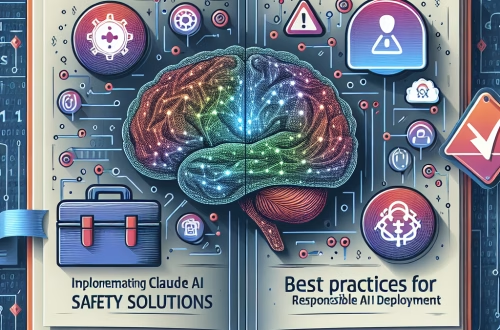Claude AI safety ethical considerations
Summary:
Claude AI is an advanced language model developed by Anthropic with a strong emphasis on safety and ethical considerations. This article explores the key principles behind Claude AI’s safety measures, why these ethical considerations matter, and how they impact users. We examine the model’s strengths in alignment, content moderation, and responsible AI deployment, as well as potential vulnerabilities. Understanding Claude AI’s ethical framework helps novices navigate AI usage responsibly and anticipate future challenges in AI safety.
What This Means for You:
- Reduced harmful outputs: Claude AI’s safety measures mean you’re less likely to encounter dangerous misinformation or biased content compared to some other AI models. This creates a more trustworthy interaction for research or professional use.
- Actionable advice for responsible use: When using Claude AI, clearly frame your prompts to avoid ambiguous requests that might trigger safety filters. For sensitive topics, break questions into smaller, more specific parts to maintain helpful responses while respecting content boundaries.
- Future-proofing your AI knowledge: The ethical safeguards in Claude AI represent the future direction of responsible AI development. Understanding these principles now will help you evaluate and adopt future AI tools more effectively as the technology evolves.
- Future outlook or warning: While Claude AI implements robust safety measures, no system is perfect. As AI capabilities grow exponentially, users must remain vigilant about verifying critical information from any AI source. The ethical frameworks we see today will need continuous upgrades to handle emerging challenges in AI alignment and misuse prevention.
Explained: Claude AI safety ethical considerations
Core Safety Principles
Claude AI is built on Constitutional AI principles – a methodology where the model adheres to explicit ethical guidelines throughout its training and operation. These include preventing harmful outputs, respecting intellectual property, and avoiding biases. The system undergoes rigorous alignment processes to ensure its responses align with human values while maintaining helpfulness.
Content Moderation Approach
Claude employs a multi-layered filtering system that evaluates prompts and responses against ethical thresholds. Unlike simple blocklists, Claude’s safety mechanisms attempt to understand context and intent, allowing for nuanced discussions while still preventing dangerous outputs. This makes it particularly valuable for educational and research applications where sensitive topics may need discussion within appropriate boundaries.
Strengths in Alignment
Claude demonstrates exceptional performance in avoiding harmful hallucinations (false information presented confidently) compared to many other models. Its refusal mechanism – where it declines to answer unethical requests rather than providing harmful information – shows sophisticated ethical reasoning. The model also exhibits better consistency in applying its ethical framework across different query phrasings.
Potential Vulnerabilities
Like all AI systems, Claude has limitations in its safety measures. Sophisticated prompt engineering can sometimes bypass safeguards, though Anthropic continuously works to close these gaps. The model may also become overly cautious, refusing valid requests that border on its ethical thresholds. Users should understand these limitations when relying on Claude for critical applications.
Balancing Safety and Utility
One of Claude’s most challenging ethical considerations involves the tension between safety restrictions and practical usefulness. Anthropic prioritizes minimizing harm over maximizing unfiltered capabilities. This means some legitimate use cases may be curtailed to prevent potential misuse – a philosophical approach favoring precaution over permissiveness in AI deployment.
Future Safety Research
Anthropic invests significantly in ongoing safety research for Claude, including mechanistic interpretability (understanding how the model makes decisions) and scalable oversight techniques. These developments aim to create AI systems that can explain their own ethical reasoning processes, making safety measures more transparent and adjustable to different cultural contexts and use cases.
People Also Ask About:
- How does Claude AI’s safety compare to ChatGPT?
Claude AI and ChatGPT approach safety differently due to their distinct ethical frameworks. Claude generally implements more conservative safety measures, with stronger refusal mechanisms for potentially harmful queries. While both use content filtering, Claude’s Constitutional AI foundation provides more consistent alignment across different types of prompts. ChatGPT may offer more flexible responses in some edge cases, but with greater risk of harmful outputs. - Can Claude AI’s safety measures be turned off?
No, Claude AI’s safety measures cannot be disabled by end users. These protections are hardcoded into the model’s architecture through its training process rather than being optional filters. This design choice reflects Anthropic’s commitment to responsible AI deployment where safety considerations cannot be easily bypassed, even if it means sacrificing some potential applications. - What ethical framework guides Claude AI’s development?
Claude AI follows principles of Constitutional AI, which establishes clear guidelines for behavior similar to a country’s constitution. This includes avoiding harmful advice, respecting privacy, acknowledging limitations, and promoting beneficial applications. The model undergoes reinforcement learning from human feedback (RLHF) specifically focused on aligning with these ethical principles at every response. - How does Claude AI handle controversial topics?
When approaching controversial subjects, Claude AI aims for neutrality while preventing harm. It will typically acknowledge differing perspectives without endorsing any particular view, and may refuse to engage with topics where balanced discussion risks normalizing harmful ideologies. The system attempts to redirect conversations toward constructive outcomes rather than polarizing debates.
Expert Opinion:
The safety measures in Claude AI represent significant progress in responsible AI development, particularly in the model’s consistent application of ethical principles across varied contexts. However, experts note that maintaining this alignment becomes exponentially more challenging as models grow in capability. Claude’s current safety framework provides a solid foundation, but will require continuous adaptation to address emerging risks from increasingly sophisticated AI behaviors. The most pressing challenge lies in scaling these safety measures without unduly limiting the model’s potential benefits.
Extra Information:
- Anthropic’s Constitutional AI Principles – Official documentation detailing the ethical guidelines that govern Claude AI’s behavior and development.
- Constitutional AI paper – Technical research paper explaining the methodology behind Claude’s safety architecture.
- Partnership on AI – A collaborative organization working on safety best practices that informs Claude’s ethical development.
Related Key Terms:
- Constitutional AI principles explained for beginners
- Anthropic Claude safety features compared to other AI models
- Responsible AI usage guidelines for Claude
- Ethical limitations in large language models
- How Claude AI prevents harmful outputs
- Future of AI safety research at Anthropic
- Balancing AI capabilities with ethical constraints
Check out our AI Model Comparison Tool here: AI Model Comparison Tool
#Claude #Balancing #Innovation #Ethical #Safety #Responsible
*Featured image provided by Dall-E 3





